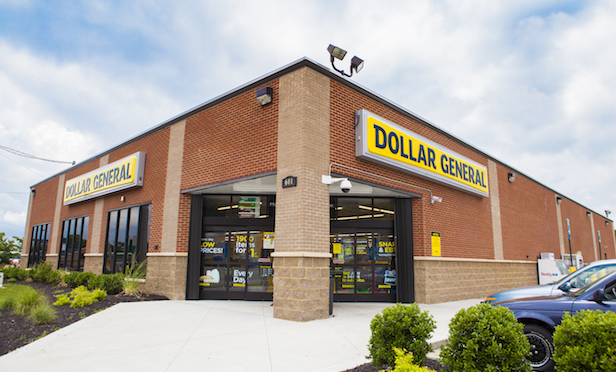 The dollar-store segment is expected to lead the way with new deliveries this year, says Marcus & Millichap.
The dollar-store segment is expected to lead the way with new deliveries this year, says Marcus & Millichap.
CALABASAS, CA—There’s a little bearishness mixed in with the bullish outlook for net lease retail, although it’s not due to any intrinsic weaknesses in the sector itself. Rather, it’s a byproduct of the same investor caution that has tempered investment sales across commercial real estate generally.
“The post-election interest rate surge forced many investors to reconsider their strategies, though the limited use of leverage by net-leased investors tempered the pullback in transactions,” according to Marcus & Millichap’s latest report on net lease retail. Yet the firm notes that “the pronounced downward pressure on net-leased asset yields during the cycle has flattened in response to higher interest rates.” Furthermore, upward pressure on cap rates is likely to be minimized by the popularity of net lease retail properties, “particularly among investors exchanging out of more-management-intensive assets.”
One source of uncertainty in the net lease realm—and one which Marcus & Millichap believes could increase investment sales volume over the coming year—is the fate of the 1031 exchange. “The scrutiny of this provision by Capitol Hill amid a broader tax reform plan is raising concerns among investors and developers, but little guidance on the future of this tax provision has yet emerged,” according to Marcus & Millichap.
In fact, a panel of experts at last week’s RealShare Net Lease conference said that although the impact on real estate investment sales would be considerable if this tax-deferred exchange were to be eliminated as part of a broader program of tax reform, the threat to 1031 deals wasn’t imminent. Scott Greenberg, analyst at the Tax Foundation’s Center for Federal Tax Policy, saw a “relatively low” probability of Congress passing tax reform that would take the axe to like-kind exchanges. “As you all may be aware, Congress is not particularly good at doing things,” Greenberg quipped.
Meanwhile, fundamentals in net lease retail are especially favorable at present. Marcus & Millichap reports that single-tenant properties saw a 3.9% increase in the average asking rent during 2016, more than double the pace of multi-tenant shopping centers over the same period. Asking rents in net-leased properties are now less than 2% shy of the pre-crisis peak, averaging $19.62 per square foot nationwide.
“Retail sales remain constructive for net-leased development, with core retail sales rising 5.7% in March on a year-over-year basis,” according to Marcus & Millichap. Growth over the past month was particularly strong in the health and personal care and food service and drinking establishment categories, with Y-O-Y gains of, respectively, 8.5% and 5.6%.
A beneficiary of the sector’s strong fundamentals has been development activity. “Over the past three years, development has averaged 44 million square feet, while net absorption has averaged 66 million, providing a strong tailwind to the segment,” says Marcus & Millichap.
In fact, single-tenant offerings have accounted for more than 80% of retail construction since 2009, up from below 70% prior to the recession. But the trend of demand exceeding new supply has extended back farther than the past three years: Marcus & Millichap notes that the shortfall in new product has averaged 16 million square feet annually since 2010.
“As a result, vacancy has fallen 240 basis points to 4.8% nationwide during this time,” Marcus & Millichap says. This level is 100 bps below the pre-recession peak, the firm says, “underscoring the vast improvement in the sector.”

















 Copyright © 2024 ALM Global, LLC. All Rights Reserved.
Copyright © 2024 ALM Global, LLC. All Rights Reserved.